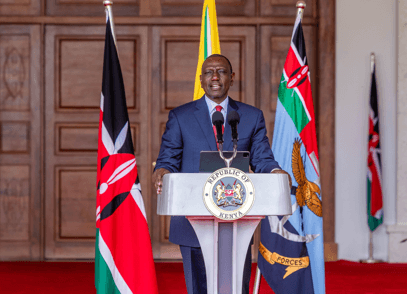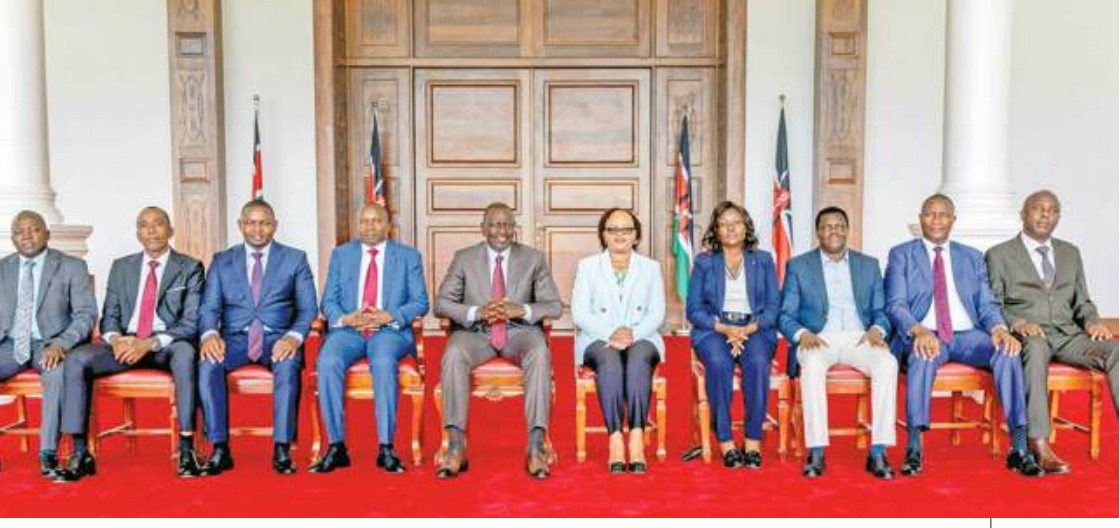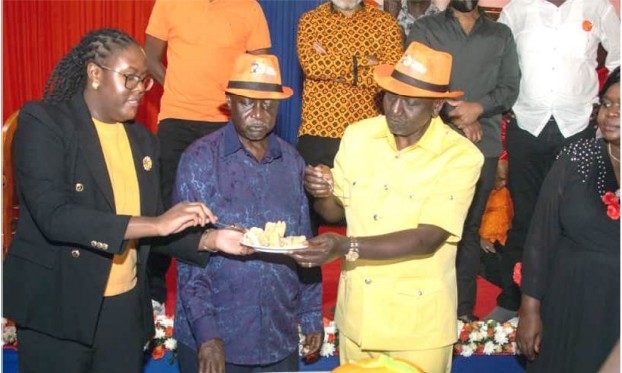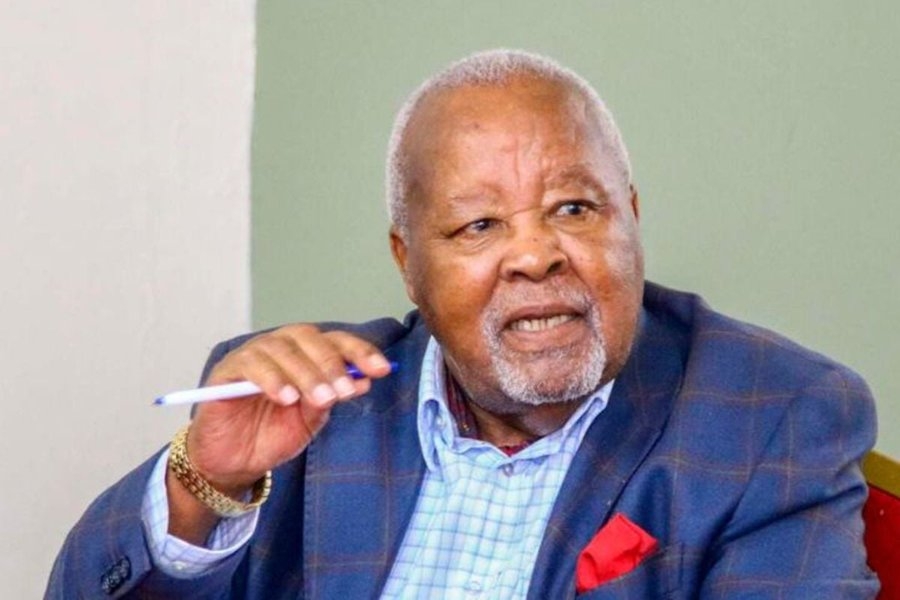Children as young as four years old are hooked to drugs.
The findings are contained in a new survey by the National Authority for the Campaign Against Alcohol and Drug Abuse (Nacada).
The survey released Wednesday reveals school children across the country are abusing drugs.
Tobacco, prescription drugs, bhang and alcohol are the most abused drugs among pupils in primary school.
The report titled 'Status of Drugs and Substance Abuse Among Primary School Pupils in Kenya 2019' sampled 3,307 pupils from 177 primary schools across 25 counties.
A sample of pupils drawn from 10 stratified regions was divided into Nairobi, Central, Lower Eastern, Upper Eastern, Lower Rift, Nyanza and Western.
Counties in the study were Mombasa, Kilifi, Lamu, Kisii, Nyamira, Kisumu, Migori, Bungoma,Kakamega, Uasin Gishu and Elgeyo Marakwet.
Others were Baringo, Bomet,Nakuru, Narok, Murang'a , Nyandarua, Kirinyaga, Meru, Isiolo, Machakos, Makueni, Kitui, Garissa and Nairobi.
Areas covered in Nairobi included Dagoretti, Embakasi, Kasarani, Kamukunji and Mathare.
Interior CS Fred Matiang'i said alcohol and drug abuse was an impediment to security and health of Kenyans.
"We will not waver in the fight against drugs," Matiang'i said in a speech read on his behalf by Interior Principal Administrative Secretary Kang'ethe Thuku.
The CS said regulations that will guide advertisement of alcoholic drinks were being finalised.
Matiang'i urged schools to develop and implement drugs and substance abuse prevention policies.
He tasked the education ministry, Nacada and other agencies to set up functional guidance and counselling departments with well trained teachers.
Nyamira county leads the pack of abusers with 64.3 per cent availability of tobacco around the school environment closely followed by Murang'a county with 56.7 per cent.
In Elgeyo Marakwet, tobacco availability stands at 54.3 per cent while in Makueni, tobacco's availability stands at 52.3 per cent.
Elgeyo Marakwet tops in the availability of alcohol near the school environment.
It is followed by Makueni (39.9 per cent), Kilifi (35.9), Kitui (35.2) and Isiolo (35).
Bungoma has availability of prescription drugs at 44.5 per cent, followed by Kirinyaga (41.35), Isiolo (40), Kakamega (39.7) and Nairobi (39.2).
The survey shows that 16.9 per cent of primary school pupils are currently using at least one drug.
"Some 7.2 per cent of primary school pupils are currently using prescription drugs; 3.2 per cent of primary school pupils are currently using tobacco," the 77-page report says.
Further, 2.6 per cent are currently using alcohol while 2.3 per cent are chewing miraa.
The most available drugs and substance of abuse are tobacco (41.9 per cent), prescription drugs (27.8), alcohol (25.9) and Miraa(23.1).
The shocking report says one per cent of the pupils in primary school are active users of bhang.
The survey shows that the availability of tobacco in Nyandarua county's school environment stood at 50 per cent.
Using a sampling frame of schools registered with the Ministry of Education, the schools were categorized into boys, girls, mixed boarding, and mixed day.
A total of 3,307 pupils drawn from class five to eight from 177 randomly selected primary schools were interviewed.
schools wereThe report shows the average age of onset of use of at least one drug is 11 years.
The common source of drugs and substance of abuse mentioned by pupils include kiosks or shops near schools, accounting for 28.6 per cent.
Bars near schools account for 25.7 per cent while friends account for 19.3 per cent.
Some 13.7 per cent of the pupils said they bought from other students while 13.6 per cent said they obtained the drugs from school workers.
The periods when drugs were mostly abused included school holidays (30 per cent), on the way home from school (22) and during weekends at school(21).
Some 20 per cent abused drugs during inter-school competitions.
The drugs and substance abuse was significantly associated with class repetition and decline in academic performance.
"Pupils who use at least one drug or substance of abuse are 18 per cent more likely to repeat class and drug abuse was associated with a 6.4 per cent decline in academic performance," the report says.
The survey says 20.2 per cent of pupils have used at least one drug or substance of abuse.
Some 10.4 per cent have used prescription drugs in their lifetime while 7.2 per cent have ever used alcohol.
Six per cent have used tobacco in while 3.7 per cent have used miraa.
Some 1.2 per cent have used bhang while the use of inhalants heroine and cocaine among primary pupils was less than one per cent.
Nacada CEO Victor Okioma said drug and substance abuse among young people in learning institutions has been a growing social and public health problem.
"We need a concerted effort, government alone cannot address this," Okioma said.
Negative role modelling by teachers and the existence of bars, shops and kiosks near schools were other risk factors identified in the survey.
It recommends targeted interventions including sensitisation.
The survey said anti-smoking and anti-drinking attitudes should be entrenched at an early age especially at four to 11 years.
It further wants guidelines on establishments, structures including business premises near schools enforced.
This could see bars, kiosks established at a minimum distance of 300 meters away from school boundary demolished.
Those near residential areas will not be spared.
To curb the use of cigarettes, the survey recommends the ban on the sale of single sticks needs enforced.














![[PHOTOS] Ole Ntutu’s son weds in stylish red-themed wedding](/_next/image?url=https%3A%2F%2Fcdn.radioafrica.digital%2Fimage%2F2025%2F11%2Ff0a5154e-67fd-4594-9d5d-6196bf96ed79.jpeg&w=3840&q=100)

